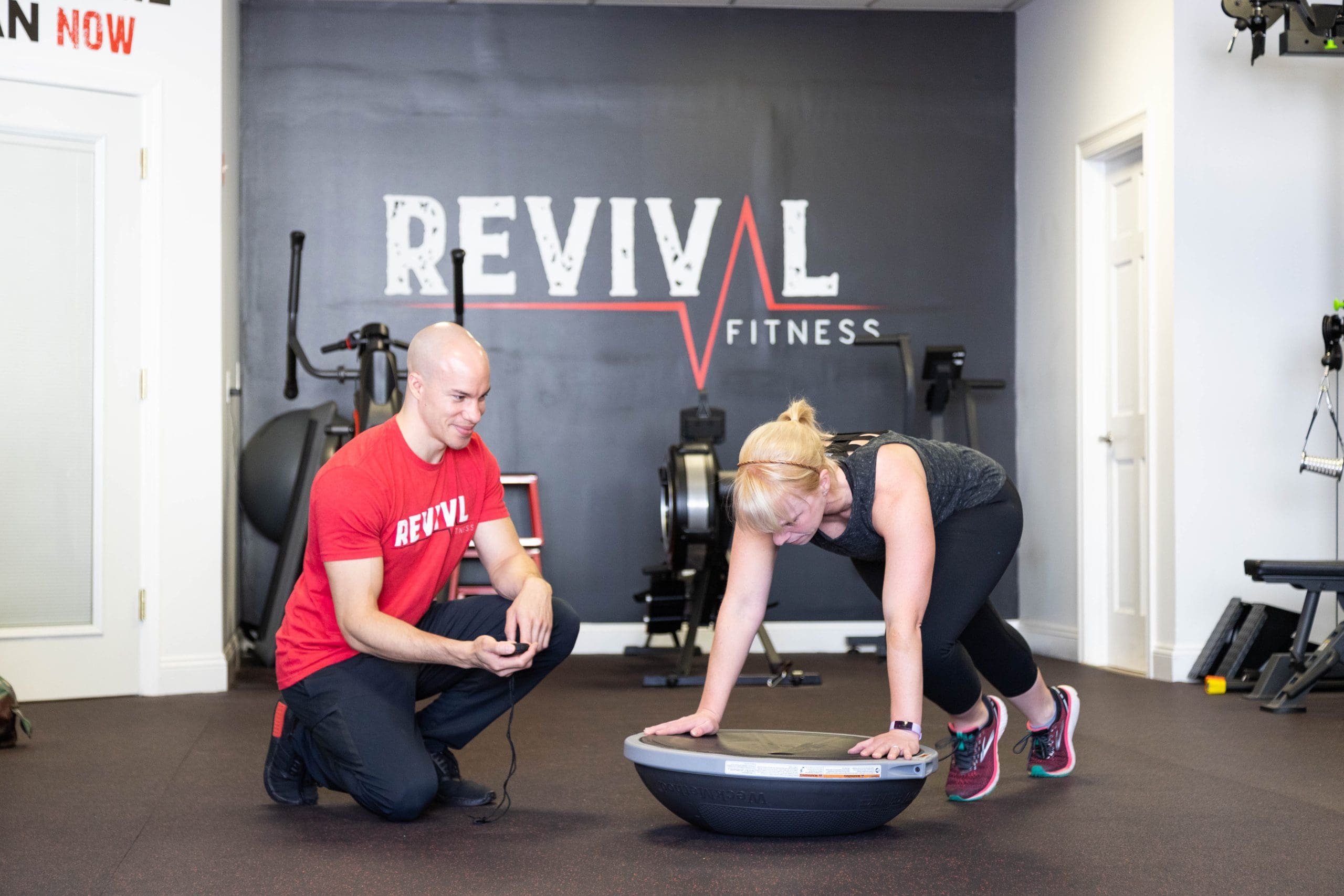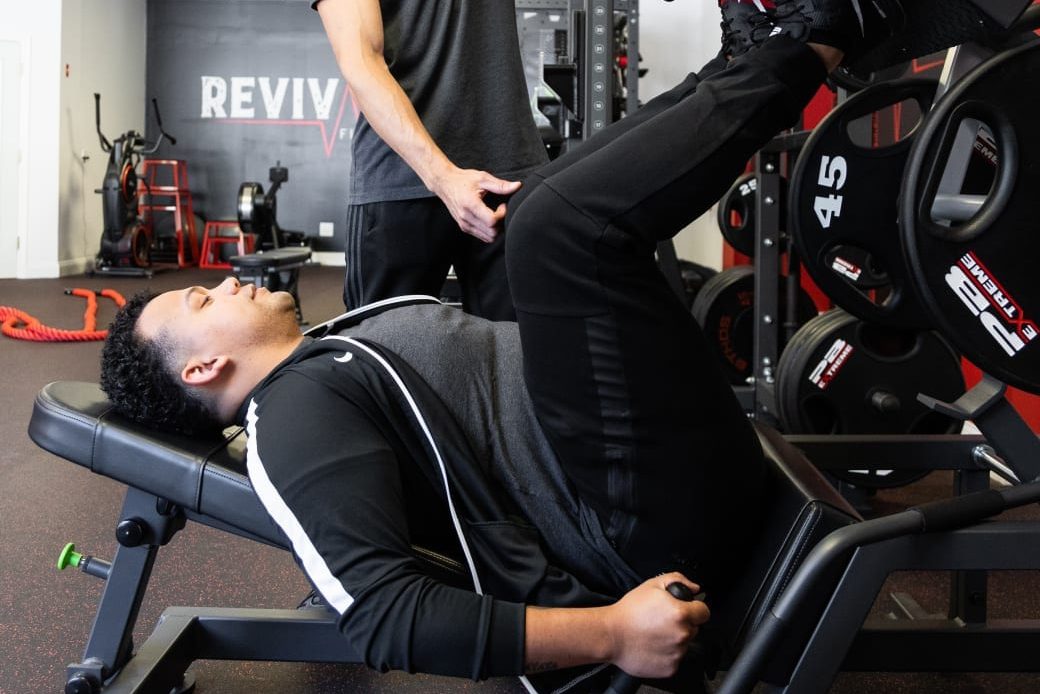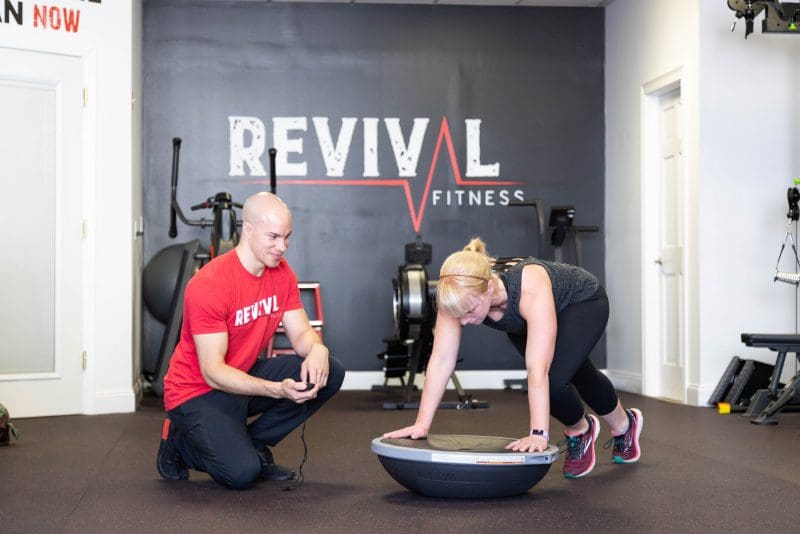Walking into a gym for the first time can feel overwhelming—especially if you’re unfamiliar with the weight room. But strength training is one of the most effective ways to build muscle, burn fat, and improve your overall health. If you’re wondering how to begin a beginner strength training gym routine, this guide will help you get started with confidence and clarity.
At Revival Fitness, we help beginners take the guesswork out of lifting weights. Whether you’re completely new to exercise or just new to strength training, this guide will walk you through essential concepts, common exercises, and what to expect as you begin your journey.
Why Strength Training Matters
Strength training is about more than just aesthetics. It offers a long list of health benefits for people of all ages, including:
- Increased muscle mass and metabolism
- Improved bone density and joint stability
- Better posture, mobility, and balance
- Reduced risk of chronic disease
- Enhanced mental health and confidence
Most importantly, it sets the foundation for a stronger, more resilient body that supports everyday life.
What You Need to Know Before Starting
Before diving into weights, it’s helpful to understand some key principles:
- Form matters more than weight. Learning proper technique is the top priority for preventing injury and building lasting strength.
- Progress takes time. Strength gains happen gradually—consistency beats intensity early on.
- You don’t need to be “fit” to start. The gym is for everyone, and you’ll get better simply by showing up and doing the work.
Need help getting started? Consider personal training support to learn safe, effective movement patterns.
Beginner Strength Training Gym Routine Structure

A typical beginner program includes full-body workouts 2–3 times per week. Each workout targets major muscle groups and includes 4–6 exercises.
Example weekly schedule:
- Monday: Full-body strength
- Wednesday: Rest or light cardio
- Friday: Full-body strength
Each workout might include:
- 1 lower body exercise (e.g., squat or leg press)
- 1 upper body push (e.g., bench press or push-up)
- 1 upper body pull (e.g., row or lat pulldown)
- 1 core movement (e.g., plank or dead bug)
- Optional accessory exercises (e.g., bicep curls, glute bridges)
Rest for 60–90 seconds between sets and focus on controlled, deliberate movements.
Best Equipment for Beginners
You don’t have to start with heavy barbells. Many gyms—including Revival Fitness—offer beginner-friendly tools like:
- Dumbbells and kettlebells
- Resistance bands
- Cable machines
- Leg press and chest press machines
- Suspension trainers (e.g., TRX)
Machines provide guided movement patterns, making them ideal for learning technique. Free weights offer more versatility and real-world strength carryover.
Key Beginner Exercises
Focus on mastering these foundational movements:
- Squats (bodyweight, goblet, machine)
- Hip hinges (glute bridges, kettlebell deadlifts)
- Push movements (push-ups, dumbbell press)
- Pull movements (dumbbell rows, assisted pull-ups)
- Core stability (planks, bird dogs)
Start with light weights and gradually increase as your form improves.
Common Mistakes to Avoid
New lifters often make these errors:
- Lifting too heavy too soon
- Rushing through reps
- Ignoring warm-ups or mobility work
- Skipping rest days
- Comparing themselves to others
Give yourself permission to learn slowly and focus on consistency, not perfection.
How to Track Progress
Progress can be measured in multiple ways, not just how much weight you lift. Look for changes in:
- Energy levels
- Strength endurance (more reps or sets)
- Confidence using equipment
- Improved posture and mobility
Keep a workout journal or use a tracking app to record sets, reps, and weights over time.
When to Ask for Help
If you’re unsure about technique or feel stuck, asking for help is smart—not a sign of weakness. A certified personal trainer can:
- Create a custom program
- Demonstrate proper form
- Offer encouragement and accountability
- Prevent injuries and plateaus
At Revival, our experienced coaches specialize in helping beginners feel empowered, not intimidated. Schedule a consultation to learn more.
Nutrition Matters Too
Pairing strength training with solid nutrition improves results. Eating enough protein, staying hydrated, and fueling your body with whole foods helps:
- Build muscle
- Speed recovery
- Stabilize energy throughout the day
Check out our Nutrition Program for additional support.
Final Tips for Getting Started
- Warm up before every session with dynamic movement (e.g., jumping jacks, air squats)
- Start with 2–3 sets of 8–12 reps for most exercises
- Rest at least one day between strength workouts
- Don’t overcomplicate things—master the basics first
And most importantly: show up. Every session builds momentum.
Ready to Begin Your Strength Journey?
Strength training is one of the best things you can do for your body and mind. With the right guidance and environment, even complete beginners can make incredible progress.
Ready to start? Join Revival Fitness today




